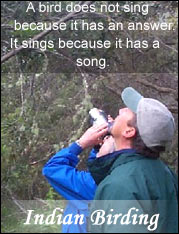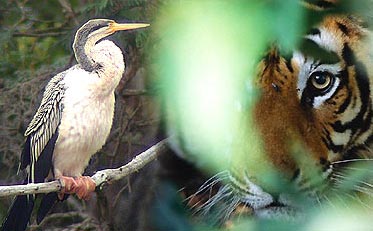 |
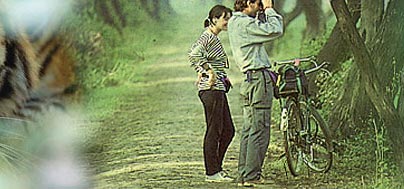 |
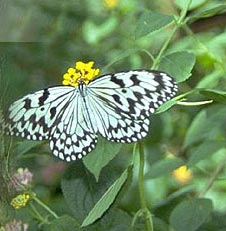 |
||
|
||||
Photo
Safari in India
Care and Maintenance
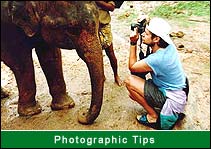 It
is always unwise to commence a holiday with new untested equipment. Always put
at least one roll of film through a new camera and carry out a full test on
any newly purchased lenses. Before departure, make yourself familiar with all
the commonly used camera and lens functions.
It
is always unwise to commence a holiday with new untested equipment. Always put
at least one roll of film through a new camera and carry out a full test on
any newly purchased lenses. Before departure, make yourself familiar with all
the commonly used camera and lens functions.
Do not forget to check that your equipment is insured and that the policy covers travel in the country you are visiting. Keep a check list of camera and lens numbers. This will be useful if you do have to make an insurance claim and as a record of what equipment you have taken with you. Should equipment be stolen, report it to the police and obtain a statement confirming that you have reported the theft, as some insurance companies will be reluctant to settle any claim without such confirmation.
What to take
Cameras: The photo opportunities on any holidays could easily prove a once in a life chance, so its worth making the effort to obtain as good a photographic record as possible. The choice of cameras available today is vast. For really successful results a top of the range 35mm Single Lens Reflex (SLR) camera with interchangeable lenses would be ideal. Most will also offer an auto focus facility, which is a great asset, saving valuable seconds and helping to secure pictures that may have been missed with manual focus equipment. As a safeguard it is worth considering taking two identical SLR’s If you are interested in underwater photography, it is possible to get underwater housings for some models or if you are really keen there are some dedicated underwater SLR cameras available. For the really keen photographer the use of medium format equipment is well worth considering. These cameras use 120 and 220 film and produce either slides or negatives two to three times bigger than 35mm.
Compact cameras have either a fixed or a zoom lens, are quick and easy to use and ideal for those visitors wanting just a photographic record. It is also possible to get underwater compacts and this is a cheap way of getting into underwater photography. As most of these underwater compacts are not pressurised, they are only operational to depths of just over one meter.
Most digital cameras are similar to compact cameras in size and operation but have the added advantage of instant replay, either through a small built in monitor or computer link. Images are recorded on an internal memory, flash card or floppy disc, so pictures can be quickly sorted, saved or deleted, to make space for more photography. An increasing number of Digital video records have a stills option and these have the added advantage of being able to record hours of action.
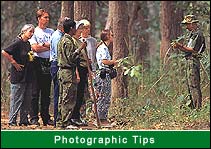 Camera Accessories: A cable release is an excellent way of reducing camera
shake and your camera should accept either an electronic or mechanical type.
A wide camera strap with some degree of elasticity will help distribute camera
and lens weight. A small hot shoe spirit level for checking horizons can be
a great aid to landscape work. Don’t forget to take lots of spare camera
batteries but please don’t dump the old ones in where they might damage
the environment..
Camera Accessories: A cable release is an excellent way of reducing camera
shake and your camera should accept either an electronic or mechanical type.
A wide camera strap with some degree of elasticity will help distribute camera
and lens weight. A small hot shoe spirit level for checking horizons can be
a great aid to landscape work. Don’t forget to take lots of spare camera
batteries but please don’t dump the old ones in where they might damage
the environment..
Lenses: If you have chosen the SLR option you will need to think about what interchangeable lenses to take with you. The manufacturer of your camera will have an excellent range of lenses to choose from. In edition, independent lenses makers will be able to offer competitive prices and some different lens combinations. A long telephoto lens of around 500mm would be very useful for bird and mammal photography. A medium zoom, something between 70 and 300mm and a short zoom 28 to 135mm will cover most other photo opportunities. For the more adventurous it would be worth looking at lenses that are wider than 28mm, some very dramatic pictures can be taken with a 14mm lens. A macro lens would be very useful for insects, plants and pattern photography. One camera manufacturer even offers image stabilizer lenses. These use a vibration gyro which detects shaking and then counter balances the movement with a magnet and coil driven optical compensation system. These particular lenses are very useful for handholding situations such as from a boat. Almost all new lenses will have auto focus and this will offer you three options, firstly, by switching it off, you can manually focus, secondly, using single shot auto focus the camera will lock onto what ever you are pointing at, but will need activating again if the subject moves. Thirdly, servo focus can be selected where the auto focus is constantly up dating the focus point, this is ideal for moving subjects.
Lens Accessories: Tele-converters increase the lenses magnification by a factor of either 1.4x or 2x and some zoom lenses are designed pacifically to work with them. Extension tubes and close-up filter attachments are another way of increasing magnification. A UV or skylight filter on each lens offers extra protection from accidental damage to the front lens element. A polarising filter is well worth taking, it will help control reflections and increases colour saturation.
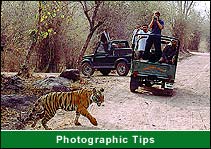 Film:
Whether you require negatives for prints or transparencies for projection,
there is a vast array of different films to choose from. Film speed or sensitivity
to light is gauged by an ISO rating, the higher the ISO, the more sensitive
to light the film will be. Films with ratings of 50ISO to 100ISO for transparencies
and 100ISO to 200ISO for negatives prove very popular for wildlife photography.
The quantity of film you require may be difficult to calculate. Try and work
out a daily requirement and then double it! Remember it’s better to have
too much and bring some home, than to run out. While it might be possible to
buy more you never know how its been stored.
Film:
Whether you require negatives for prints or transparencies for projection,
there is a vast array of different films to choose from. Film speed or sensitivity
to light is gauged by an ISO rating, the higher the ISO, the more sensitive
to light the film will be. Films with ratings of 50ISO to 100ISO for transparencies
and 100ISO to 200ISO for negatives prove very popular for wildlife photography.
The quantity of film you require may be difficult to calculate. Try and work
out a daily requirement and then double it! Remember it’s better to have
too much and bring some home, than to run out. While it might be possible to
buy more you never know how its been stored.
X-ray security checks at airports are standard procedure; while those used for hand luggage checks should not course any problems, hold luggage is often checked with more powerful X-rays, which will course some fogging. So always take you film as hand luggage. A useful way to carry film is to utilise old slide boxes, these take 4 rolls of 35mm film, offer protection from impact and dust, their transparent lids facilitate quick security checks and they stack more easily in a camera bag. If you are using a digital camera make sure you have a supply of flash cards. Anyone using video should make sure they have plenty of blank tapes.
Other Accessories: An electronic flashgun is well worth its place in your camera bag, as a ‘fill in’ to soften harsh shadows during the daytime and to light any close-up macro photography. Remember that some animals get stressed when repeatedly flashed, so be considerate in its use.
There are a large number of camera bags available and purchasing one is a matter of personal choice. However, it is worth considering one that doubles as a rucksack, which is a much more comfortable way of carrying equipment over rough ground. Some camera bags of this type also have a built in waterproof cape, which is useful extra protection. In selecting a suitable bag, resist the temptation to purchase one that is too big – you will only feel obliged to fill it! Airlines are generally reducing hand luggage allowances so make sure that your bag size comes within recommended limits. A photographic waistcoat is a handy garment for keeping films, filters cable releases, etc readily to hand.
The commonest cause of picture failure is lack of definition as a result of camera shake. The most effective way of over coming this is by using a good tripod; there are many light, yet sturdy models on the market, which will fit comfortably into the average suitcase. Monopods are also a good means of steadying the camera, but they do require a little practice. Rifle stocks and pistol grips are another form of support and allow freedom of movement when attempting to photograph moving subjects.
Photographic Tips
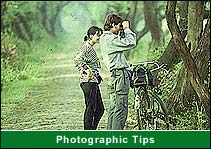 Lighting
: Top lighting effect is not ideal for photographing wildlife or landscapes;
low side lighting is better for showing detail in wildlife subjects and creates
more interesting shadows in landscapes. So it’s important to make full
use of the light at sunrise and again in the later afternoon. While most wildlife
photographs are taken with the sunlight behind the photographer thereby fully
lighting the subject, it should be remembered that some spectacular images can
be taken using side or back lighting, particularly using the warm glow created
at sunrise and sunset.
Lighting
: Top lighting effect is not ideal for photographing wildlife or landscapes;
low side lighting is better for showing detail in wildlife subjects and creates
more interesting shadows in landscapes. So it’s important to make full
use of the light at sunrise and again in the later afternoon. While most wildlife
photographs are taken with the sunlight behind the photographer thereby fully
lighting the subject, it should be remembered that some spectacular images can
be taken using side or back lighting, particularly using the warm glow created
at sunrise and sunset.
Exposure : Correct exposure is the key to successful photography and modern cameras, with their built-in metering systems, go a long way to reducing the possibility of incorrect exposure. However there are situations where even the most complex metering system is going to struggle. A good example would be a white bird on very dark background, the meter is likely to try and expose correctly for the background, which will over exposure the bird. This is where a good understanding of your camera comes into play. Most SLR cameras will have a +/- (over/under exposure) override and, in the situation outlined above, you will need to under expose by about 1 to 2 stops to ensure correct exposure. The same effect can be obtained by doubling the (ISO) film speed i.e. 100 to 200ISO, but remember to change these setting back before moving on.
In any situation where you are not sure about the exposure you can always bracket. For example if your metering reading is 1/60th at f8, take one picture at this setting, then two further exposures at 1/60th at f11 and 1/60th at f5.6, to do this you may have to switch the camera to manual mode or use the +/- override.
Depth of Field : When the camera lens is focused to give a sharp image of a particular subject, other objects, closer or further away, do not appear equally as sharp. They can be made sharp by ‘stopping down’ using a smaller ‘f stop’. The higher the ‘f stop’ number, the more depth of field is available. It should be remembered that as you stop down your shutter speed will get slower and subject movement will become more of a problem.
‘Stopping down’ is important when photographing plants, insects and other small subjects as it reduces out of focus distractions. The opposite procedure can be used to help isolate your main centre of interest by making background or foreground distractions go out of focus.
Don’t forget that you can check the depth of field created by any given ‘f stop’, by using the depth of field button on your camera, This button allows you to preview the finished image though the view finder and to make adjustments to your own satisfaction prior to making any exposure.
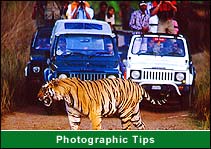 Shutter
Speed : Different shutter speeds produce varying effects with regard to
subject blur and camera shake. Fast shutter speeds are desirable for stopping
movement, such as flying birds and eliminating camera shake. It is worth remembering
that is some situations movement of the subject during exposure can often result
in a pleasing pictorial image.
Shutter
Speed : Different shutter speeds produce varying effects with regard to
subject blur and camera shake. Fast shutter speeds are desirable for stopping
movement, such as flying birds and eliminating camera shake. It is worth remembering
that is some situations movement of the subject during exposure can often result
in a pleasing pictorial image.
Composition : The automation of modern cameras has taken away most of the technical pit falls of photography. Composition is the tool by which we can express our artistic thoughts and so demands an active input. It is therefore in your own interest to be fully conversant with the factors relating to good composition. Many newcomers to photography tend to produce all their images in a horizontal format, partly because of the layout of modern cameras which lend themselves to this shape. Remember they work equally well when turned through 90 degrees to a vertical format.
Changing your viewpoint can totally alter your image, we get used to seeing everything from a standing position, by kneeling or even lying down you are going to show an angle that we are not familiar with, which will often produce a more unusual result. A wide-angle lens used in this way can create some very interesting effects.
Think about where you are going to place the main point of interest in your image, avoid placing your subject in the centre of the frame. If it’s an animal, it needs room to move or to look into the picture space. A flying bird should be flying into the picture rather than out of it. Always attempt to get a ‘highlight’ in the eye, as this gives life to the subject. Do pay attention to the horizon line, particularly in landscapes and avoid splitting your picture in half, think in ‘thirds’. Zoom lenses have become a great asset by allowing control over subject size and perspective, with out moving the camera position.
By utilising a range of lenses it is often possible to secure an interesting sequence of images of an animal. The longest lenses for a close up of the head, through to a wide angle, which will show the landscape.
Notes : Either date and or number each film, using an indelible felt tip pen. Then, by keeping details notes of what you saw each day, you will then be able to accurately caption your photographs.
Code of Conduct : It should always be remembered that the welfare of the subject is more important the photograph. Do not go too close, Do not use flash if it might disturb the subject, Do not make lots of noise. Do not discard any form of litter. Take only pictures leave only memories!
Care and Maintenance
 It
is always unwise to commence a holiday with new untested equipment. Always put
at least one roll of film through a new camera and carry out a full test on
any newly purchased lenses. Before departure, make yourself familiar with all
the commonly used camera and lens functions.
It
is always unwise to commence a holiday with new untested equipment. Always put
at least one roll of film through a new camera and carry out a full test on
any newly purchased lenses. Before departure, make yourself familiar with all
the commonly used camera and lens functions. Do not forget to check that your equipment is insured and that the policy covers travel in the country you are visiting. Keep a check list of camera and lens numbers. This will be useful if you do have to make an insurance claim and as a record of what equipment you have taken with you. Should equipment be stolen, report it to the police and obtain a statement confirming that you have reported the theft, as some insurance companies will be reluctant to settle any claim without such confirmation.
What to take
Cameras: The photo opportunities on any holidays could easily prove a once in a life chance, so its worth making the effort to obtain as good a photographic record as possible. The choice of cameras available today is vast. For really successful results a top of the range 35mm Single Lens Reflex (SLR) camera with interchangeable lenses would be ideal. Most will also offer an auto focus facility, which is a great asset, saving valuable seconds and helping to secure pictures that may have been missed with manual focus equipment. As a safeguard it is worth considering taking two identical SLR’s If you are interested in underwater photography, it is possible to get underwater housings for some models or if you are really keen there are some dedicated underwater SLR cameras available. For the really keen photographer the use of medium format equipment is well worth considering. These cameras use 120 and 220 film and produce either slides or negatives two to three times bigger than 35mm.
Compact cameras have either a fixed or a zoom lens, are quick and easy to use and ideal for those visitors wanting just a photographic record. It is also possible to get underwater compacts and this is a cheap way of getting into underwater photography. As most of these underwater compacts are not pressurised, they are only operational to depths of just over one meter.
Most digital cameras are similar to compact cameras in size and operation but have the added advantage of instant replay, either through a small built in monitor or computer link. Images are recorded on an internal memory, flash card or floppy disc, so pictures can be quickly sorted, saved or deleted, to make space for more photography. An increasing number of Digital video records have a stills option and these have the added advantage of being able to record hours of action.
 Camera Accessories: A cable release is an excellent way of reducing camera
shake and your camera should accept either an electronic or mechanical type.
A wide camera strap with some degree of elasticity will help distribute camera
and lens weight. A small hot shoe spirit level for checking horizons can be
a great aid to landscape work. Don’t forget to take lots of spare camera
batteries but please don’t dump the old ones in where they might damage
the environment..
Camera Accessories: A cable release is an excellent way of reducing camera
shake and your camera should accept either an electronic or mechanical type.
A wide camera strap with some degree of elasticity will help distribute camera
and lens weight. A small hot shoe spirit level for checking horizons can be
a great aid to landscape work. Don’t forget to take lots of spare camera
batteries but please don’t dump the old ones in where they might damage
the environment.. Lenses: If you have chosen the SLR option you will need to think about what interchangeable lenses to take with you. The manufacturer of your camera will have an excellent range of lenses to choose from. In edition, independent lenses makers will be able to offer competitive prices and some different lens combinations. A long telephoto lens of around 500mm would be very useful for bird and mammal photography. A medium zoom, something between 70 and 300mm and a short zoom 28 to 135mm will cover most other photo opportunities. For the more adventurous it would be worth looking at lenses that are wider than 28mm, some very dramatic pictures can be taken with a 14mm lens. A macro lens would be very useful for insects, plants and pattern photography. One camera manufacturer even offers image stabilizer lenses. These use a vibration gyro which detects shaking and then counter balances the movement with a magnet and coil driven optical compensation system. These particular lenses are very useful for handholding situations such as from a boat. Almost all new lenses will have auto focus and this will offer you three options, firstly, by switching it off, you can manually focus, secondly, using single shot auto focus the camera will lock onto what ever you are pointing at, but will need activating again if the subject moves. Thirdly, servo focus can be selected where the auto focus is constantly up dating the focus point, this is ideal for moving subjects.
Lens Accessories: Tele-converters increase the lenses magnification by a factor of either 1.4x or 2x and some zoom lenses are designed pacifically to work with them. Extension tubes and close-up filter attachments are another way of increasing magnification. A UV or skylight filter on each lens offers extra protection from accidental damage to the front lens element. A polarising filter is well worth taking, it will help control reflections and increases colour saturation.
 Film:
Whether you require negatives for prints or transparencies for projection,
there is a vast array of different films to choose from. Film speed or sensitivity
to light is gauged by an ISO rating, the higher the ISO, the more sensitive
to light the film will be. Films with ratings of 50ISO to 100ISO for transparencies
and 100ISO to 200ISO for negatives prove very popular for wildlife photography.
The quantity of film you require may be difficult to calculate. Try and work
out a daily requirement and then double it! Remember it’s better to have
too much and bring some home, than to run out. While it might be possible to
buy more you never know how its been stored.
Film:
Whether you require negatives for prints or transparencies for projection,
there is a vast array of different films to choose from. Film speed or sensitivity
to light is gauged by an ISO rating, the higher the ISO, the more sensitive
to light the film will be. Films with ratings of 50ISO to 100ISO for transparencies
and 100ISO to 200ISO for negatives prove very popular for wildlife photography.
The quantity of film you require may be difficult to calculate. Try and work
out a daily requirement and then double it! Remember it’s better to have
too much and bring some home, than to run out. While it might be possible to
buy more you never know how its been stored. X-ray security checks at airports are standard procedure; while those used for hand luggage checks should not course any problems, hold luggage is often checked with more powerful X-rays, which will course some fogging. So always take you film as hand luggage. A useful way to carry film is to utilise old slide boxes, these take 4 rolls of 35mm film, offer protection from impact and dust, their transparent lids facilitate quick security checks and they stack more easily in a camera bag. If you are using a digital camera make sure you have a supply of flash cards. Anyone using video should make sure they have plenty of blank tapes.
Other Accessories: An electronic flashgun is well worth its place in your camera bag, as a ‘fill in’ to soften harsh shadows during the daytime and to light any close-up macro photography. Remember that some animals get stressed when repeatedly flashed, so be considerate in its use.
There are a large number of camera bags available and purchasing one is a matter of personal choice. However, it is worth considering one that doubles as a rucksack, which is a much more comfortable way of carrying equipment over rough ground. Some camera bags of this type also have a built in waterproof cape, which is useful extra protection. In selecting a suitable bag, resist the temptation to purchase one that is too big – you will only feel obliged to fill it! Airlines are generally reducing hand luggage allowances so make sure that your bag size comes within recommended limits. A photographic waistcoat is a handy garment for keeping films, filters cable releases, etc readily to hand.
The commonest cause of picture failure is lack of definition as a result of camera shake. The most effective way of over coming this is by using a good tripod; there are many light, yet sturdy models on the market, which will fit comfortably into the average suitcase. Monopods are also a good means of steadying the camera, but they do require a little practice. Rifle stocks and pistol grips are another form of support and allow freedom of movement when attempting to photograph moving subjects.
Photographic Tips
 Lighting
: Top lighting effect is not ideal for photographing wildlife or landscapes;
low side lighting is better for showing detail in wildlife subjects and creates
more interesting shadows in landscapes. So it’s important to make full
use of the light at sunrise and again in the later afternoon. While most wildlife
photographs are taken with the sunlight behind the photographer thereby fully
lighting the subject, it should be remembered that some spectacular images can
be taken using side or back lighting, particularly using the warm glow created
at sunrise and sunset.
Lighting
: Top lighting effect is not ideal for photographing wildlife or landscapes;
low side lighting is better for showing detail in wildlife subjects and creates
more interesting shadows in landscapes. So it’s important to make full
use of the light at sunrise and again in the later afternoon. While most wildlife
photographs are taken with the sunlight behind the photographer thereby fully
lighting the subject, it should be remembered that some spectacular images can
be taken using side or back lighting, particularly using the warm glow created
at sunrise and sunset. Exposure : Correct exposure is the key to successful photography and modern cameras, with their built-in metering systems, go a long way to reducing the possibility of incorrect exposure. However there are situations where even the most complex metering system is going to struggle. A good example would be a white bird on very dark background, the meter is likely to try and expose correctly for the background, which will over exposure the bird. This is where a good understanding of your camera comes into play. Most SLR cameras will have a +/- (over/under exposure) override and, in the situation outlined above, you will need to under expose by about 1 to 2 stops to ensure correct exposure. The same effect can be obtained by doubling the (ISO) film speed i.e. 100 to 200ISO, but remember to change these setting back before moving on.
In any situation where you are not sure about the exposure you can always bracket. For example if your metering reading is 1/60th at f8, take one picture at this setting, then two further exposures at 1/60th at f11 and 1/60th at f5.6, to do this you may have to switch the camera to manual mode or use the +/- override.
Depth of Field : When the camera lens is focused to give a sharp image of a particular subject, other objects, closer or further away, do not appear equally as sharp. They can be made sharp by ‘stopping down’ using a smaller ‘f stop’. The higher the ‘f stop’ number, the more depth of field is available. It should be remembered that as you stop down your shutter speed will get slower and subject movement will become more of a problem.
‘Stopping down’ is important when photographing plants, insects and other small subjects as it reduces out of focus distractions. The opposite procedure can be used to help isolate your main centre of interest by making background or foreground distractions go out of focus.
Don’t forget that you can check the depth of field created by any given ‘f stop’, by using the depth of field button on your camera, This button allows you to preview the finished image though the view finder and to make adjustments to your own satisfaction prior to making any exposure.
 Shutter
Speed : Different shutter speeds produce varying effects with regard to
subject blur and camera shake. Fast shutter speeds are desirable for stopping
movement, such as flying birds and eliminating camera shake. It is worth remembering
that is some situations movement of the subject during exposure can often result
in a pleasing pictorial image.
Shutter
Speed : Different shutter speeds produce varying effects with regard to
subject blur and camera shake. Fast shutter speeds are desirable for stopping
movement, such as flying birds and eliminating camera shake. It is worth remembering
that is some situations movement of the subject during exposure can often result
in a pleasing pictorial image. Composition : The automation of modern cameras has taken away most of the technical pit falls of photography. Composition is the tool by which we can express our artistic thoughts and so demands an active input. It is therefore in your own interest to be fully conversant with the factors relating to good composition. Many newcomers to photography tend to produce all their images in a horizontal format, partly because of the layout of modern cameras which lend themselves to this shape. Remember they work equally well when turned through 90 degrees to a vertical format.
Changing your viewpoint can totally alter your image, we get used to seeing everything from a standing position, by kneeling or even lying down you are going to show an angle that we are not familiar with, which will often produce a more unusual result. A wide-angle lens used in this way can create some very interesting effects.
Think about where you are going to place the main point of interest in your image, avoid placing your subject in the centre of the frame. If it’s an animal, it needs room to move or to look into the picture space. A flying bird should be flying into the picture rather than out of it. Always attempt to get a ‘highlight’ in the eye, as this gives life to the subject. Do pay attention to the horizon line, particularly in landscapes and avoid splitting your picture in half, think in ‘thirds’. Zoom lenses have become a great asset by allowing control over subject size and perspective, with out moving the camera position.
By utilising a range of lenses it is often possible to secure an interesting sequence of images of an animal. The longest lenses for a close up of the head, through to a wide angle, which will show the landscape.
Notes : Either date and or number each film, using an indelible felt tip pen. Then, by keeping details notes of what you saw each day, you will then be able to accurately caption your photographs.
Code of Conduct : It should always be remembered that the welfare of the subject is more important the photograph. Do not go too close, Do not use flash if it might disturb the subject, Do not make lots of noise. Do not discard any form of litter. Take only pictures leave only memories!
Photographic Safari
Tiger Photographic Safari Elephant Photographic
Safari
Elephant Photographic
Safari  Wildlife Photographic Safari
Wildlife Photographic Safari
 Bird Photographic Safari
Bird Photographic Safari
 Photographic Tips
Photographic Tips  more...
more...
Tiger Photographic Safari
| Home | About Us | FAQ's | Contact Us | Commendations | Reservation |
| Copyright © Wildlife India Plus ( All Rights Reserved. ) | Web Development & SEO Services by |
